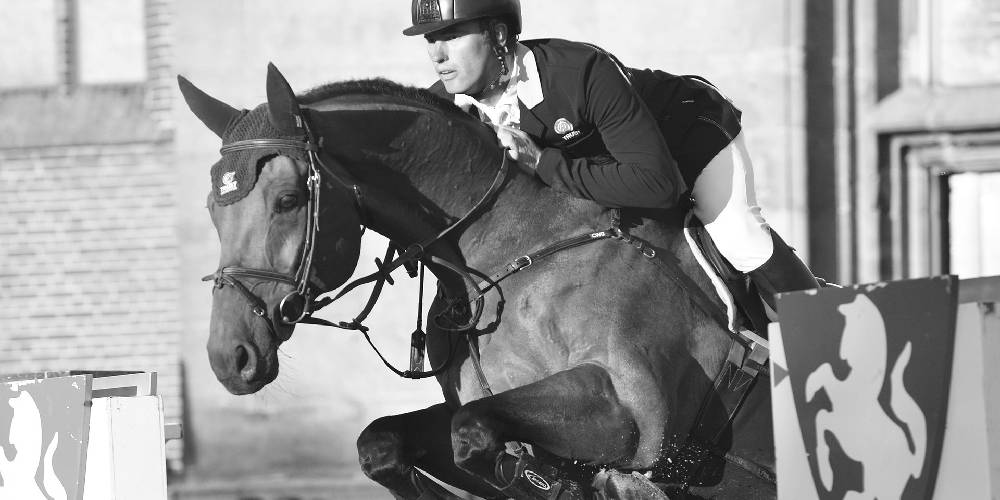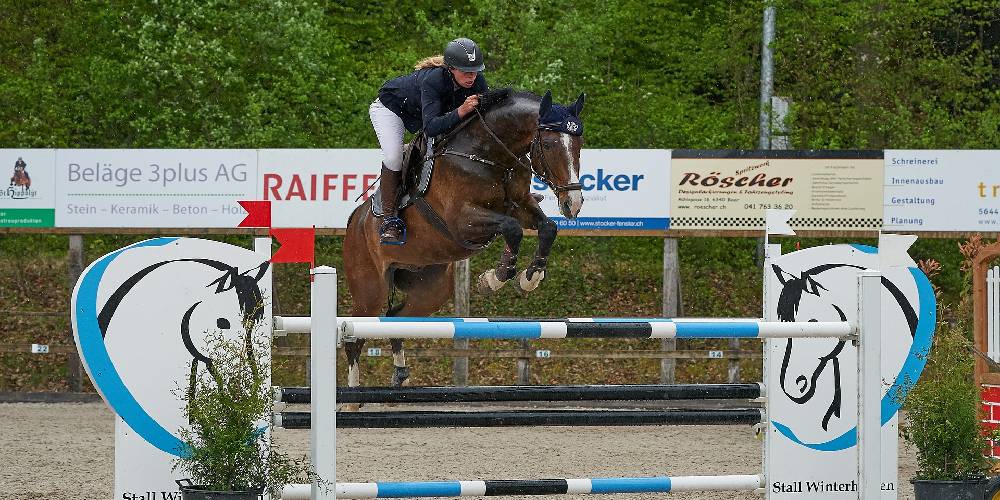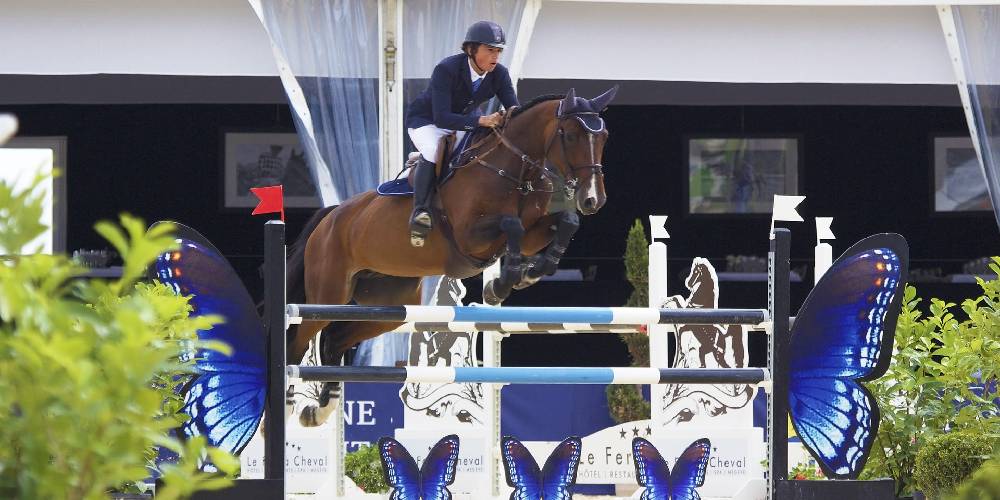The. Hanoverian is a truly amazing horse breed known for its jumping ability, beauty, and grace. These horses are often seen at the highest level of competition and are often unbeatable in the show jumping discipline. But where are these horses originated from? And what is the history of the breed? Keep reading to find out!
In this guide I will discuss:
- What the Hanoverian breed is
- Basic breed information
- How big these horses are
- What colors these horses come in
- The history of the Hanoverian breed
- How to identify these horses
- What these horses are good at
- How long the Hanoverian’s lifespan is
- Facts on the breed
What is a Hanoverian Horse?
The Hanoverian is a German breed of horse that is categorized as a warmblooded breed. These amazing horses are tall, standing at around 16.2 hands high on average. This breed is mainly used as a showjumping horse but also excels in other disciplines like dressage, eventing, and driving. These horses generally come in any solid color and stand out in competitions because of their natural skills and abilities. These horses are known world wide and have made it to the Olympic-level in dressage and showjumping. These horses are well mannered and make great riding horses both for experienced and advanced level riders.
Basic Breed Information
Here is some quick information on the Hanoverian breed that you may find useful:
| Height | Roughly 16.2 hands high |
| Weight | Around 1,400 pounds (635 Kilograms) |
| Acceptable Colors | Black, Bay, Grey, and Chestnut |
| Country of Origin | Germany |
| Type | Warmblood |
How Big is the Hanoverian?

The Hanoverian is a very large horse breed. Though these horses stand already at the tall height of 16.2 hands high, they can easily stand at around 17.2 hands high in some cases.
These horses are not only tall, but very heavy as well. This is because of their immense height, strong frame, and pounds and pounds of muscle. The average weight for these horses lands at around 1,400 pounds (635 Kilograms) making them one of the heavier Warmblooded breeds.
What Colors Can These Horses Come In?
The Hanoverian is mainly seen in the 4 base colors that most horses come in. These colors include:
- Bay
- Black
- Gray
- Chestnut
The Hanoverian registries in the world don’t like to really allow palomino, buckskin, or white horses to enter the registry because those horses are likely not pure Hanoverian and it may ‘contaminate’ the breeds and bloodlines.
The History of the Hanoverian
The Hanoverian horse breed has a very interesting history that extends back all the way to the 1700s.
In the year 1714, George Louis, the Elector of Hanover, became the King of England. King George II, as he was known, founded a stud known as the Celle stud in Lower Saxony. It was here that the Hanoverian horse was created.
Selective breeding took place at this stud. The main horses bred at this stud to create the base stock for this breed were Thoroughbreds and Thoroughbred-type horses and, more importantly, 14 black Holstein stallions. It was these Holsteins that were the main influence in the development of the Hanoverian breed over the next 30 years.
The goal with all this breeding was to create a horse that was strong enough for carriage and agricultural work, but light enough to use as a riding horse. More Thoroughbred blood was then added to make it lighter for riding because of the lack of popularity the breed possessed in driving and farm work.
During the Napoleonic wars between the years 1812 and 1813, the numbers of these horses plummeted significantly and by the year 1816, only 30 Hanoverian stallions remained on earth. With the dire need to bring the numbers of these horses back, Thoroughbred horses were imported until around 35% of the breeding stock at the Celle stud was Thoroughbred. With the great number of Thoroughbreds being crossed into the Hanoverian bloodlines, the breed began to get lighter.
Now a light horse, any use on the farms was just a part of the Hanoverian’s history. By 1924 the numbers of these horses were sky rocketing and now there were over 500 Hanoverian stallions standing at stud at the Celle stud. A remarkable thing about these horses is that they were one of the only breeds to not suffer an intense drop in population during World War I.
With the huge amount of horses at the original Celle stud too much to handle, a second stud was opened at Osnabruck for these horses to repopulate at.
With more crossing to the Thoroughbred horses and eventually Trakehner horses, the breed grew further in popularity and success and its showjumping and dressage skills became apparent.
How to Identify these Horses
There are a few traits that this breed carries to make them stand out among other horses. These traits include:
- An attractive head
- Long, well-conformed neck
- Deep, wide chest
- Well-sloped shoulders
- A long straight back
- Muscular quarters
- Well-set tail
- Strong legs
- Broad joints
- Hard hooves
- Elegant appearance
- Free moving gaits
- Excellent balance
What is the Hanoverian Good At?

The Hanoverian is especially good at jumping. Showjumping is one of the things that these horses are known to excel in.
There are many Hanoverian horses who have made it as far as Olympic level shows and other international competitions.
Though the Hanoverian’s specialty is showjumping, dressage is a sport where these horses are often seen too.
How Long do these Horses Live on Average?
Hanoverians have the average lifespan of between 25 and 30 years. This puts them at around average when it comes to the lifespan of horses.
Facts on the Hanoverian Breed
- The breed was originated in Germany
- Hanoverians have made it to the Olympics many times and have won gold medals in all the equine sports there

